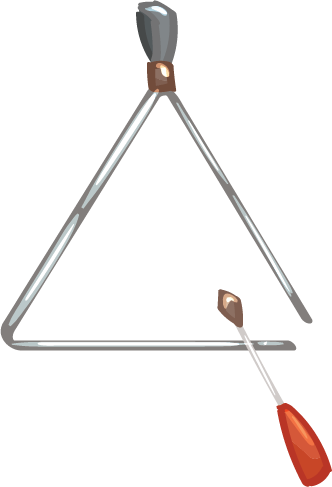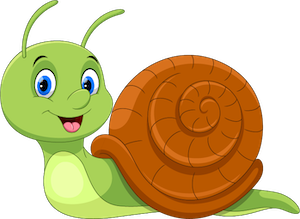
Prep. Lesson 26. Longer & shorter sounds
- Woodblock Difficulty:
 Prior learning: None
Prior learning: None

![]() Students will learn to identify and demonstrate long and short sounds using instruments and body movements.
Students will learn to identify and demonstrate long and short sounds using instruments and body movements.
 Success Criteria
Success Criteria
- I can create long and short sounds with an instrument.
- I can represent long and short sounds with body movements.
- I can observe and discuss the differences between long and short sounds.

- Explain to students that sounds can last for different lengths of time, even when using the same instrument.
- Strike the instrument and let the sound resonate to show a long sound.
- Strike it again and touch the instrument with your hand to stop it quickly, showing a short sound.
- Invite a volunteer to try creating both long and short sounds on the triangle or chime bar.
- Guide them in practising striking and stopping the instrument, creating these different durations.
- Play a long sound. Encourage students to show long sounds using extended body movements like sweeping arm gestures.
- For short sounds, ask them to use brief body percussion actions such as clapping or performing patschen (patting their hands on their thighs).
- Lead the class in showing long and short sounds using their bodies. For example, when a long sound is played, students can move their arms out wide, and for a short sound, they can clap once or pat their thighs.
![]() Students will learn to identify and represent long and short sounds through vocal practice and corresponding body movements.
Students will learn to identify and represent long and short sounds through vocal practice and corresponding body movements.
 Success Criteria
Success Criteria
- I can create short consonant and long vowel sounds with my voice.
- I can represent long and short sounds with appropriate body movements.
- I can differentiate between the length of sounds and connect them to movements.
- I can participate and share observations about long and short sounds.
- Start by producing short, consonant syllables such as ‘t’, ‘k’, and ‘b’.
- Ask students to imitate these sounds, practising their ability to create short, quick vocal sounds.
- Show students how short sounds can be represented through clapping or patting.
- Have them practice clapping or patting along with the short consonant sounds they just made, ensuring they connect the sound with the movement.
- Produce extended vowel sounds like ‘oooh’ and ‘ahhhh’.
- Ask students to repeat these sounds, focusing on the longer duration compared to the short consonant sounds.
- Demonstrate how to visually represent sound length with your hands.
- For long sounds, gradually spread your hands apart to show the lengthening of the sound.
- For short sounds, bring your hands quickly together to represent the briefness of the sound.
- Encourage students to follow along and connect their vocal practice with the corresponding hand movements.
- Engage students in discussing the differences between the long vowel and short consonant sounds they practised.
- Ask questions like, “What did you notice about how we represented long and short sounds?” and “Which body movements matched the long and short sounds best?”
![]() Students will learn to identify long and short sounds visually and connect them with real-life images and body movements.
Students will learn to identify long and short sounds visually and connect them with real-life images and body movements.
- Project the images of a plane, police car, hammer, train, balloon pop, and hand clap.
- Ask the students what sound each makes and whether it would be long or short.
- Ask the students to mimic the sounds they think the images represent. For example, they can make a long “whooooosh” for the plane or a short “pop” for the balloon.
- Point to an image and ask students to use their bodies to represent the sound duration. For long sounds (plane, police car, train), students can spread their arms wide and move them slowly apart.
- Students can make a quick, small clap or pat for short sounds (e.g., hammer, balloon pop, clap).
- Repeat this exercise with each image to help students connect the sound with its duration.
- Ask students which images they thought had the longest and shortest sounds and why.
 Success Criteria
Success Criteria
- I can identify long and short sounds using images.
- I can describe which images represent long or short sounds and explain why.
- I can use body movements to show the length of sounds.
- I can participate and respond to visual and sound cues in class.
![]() Students will apply their knowledge of long and short sounds to a new song, reinforcing their understanding through singing and movement.
Students will apply their knowledge of long and short sounds to a new song, reinforcing their understanding through singing and movement.
![]() Lyrics
Lyrics
Snail, snail, snail, snail.
Goes around and round and round.
Long, long, long, long.
Short, short, short, short, short, short, long.

- Begin by singing the song with the class.
- Sing it together to ensure they are comfortable with the melody and lyrics.
- Tell the students that they will sing the song again, but this time, they will replace the original words with “long” and “short” to focus on sound duration.
- The words "snail" are long, and the others are all short. Clap the rhythm as the students sing the new words.
- Discuss how “long” sounds are held for a longer time while “short” sounds are quick and brief.
 Success Criteria
Success Criteria
- I can sing the song using “long” and “short.”
- I can keep in time with the beat while singing with substituted words.
- I can participate and share my experience with the class.
![]() Students will learn to break down words into syllables and count the number of sounds in their names.
Students will learn to break down words into syllables and count the number of sounds in their names.
 Success Criteria
Success Criteria
- I can identify and clap the sounds in my name.
- I can count the number of syllables in my name and my classmates’ names.
- I can participate in discussions about syllables and the number of sounds in different names.
- Explain to the class that names can be broken down into sounds.
Demonstrate using your name, clapping your hands once for each syllable as you say it. For example, “Mi-chael” (two claps). - Say your name slowly and clap for each syllable. Then, ask the students to say your name and clap with you.
- Reinforce that each clap represents a different sound in the name.
- Call on volunteers to say their names and clap the syllables while the class listens and counts along.
- Repeat the process with different names to ensure students understand how to count the sounds.
Suggested lessons
Y1. Beat II

Y1. Beat III

Y1. Beat IV

